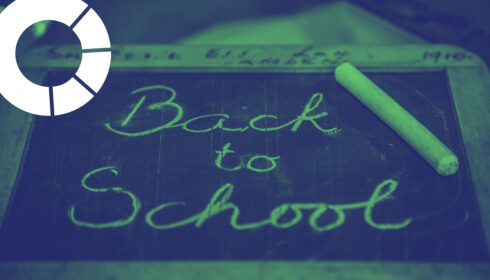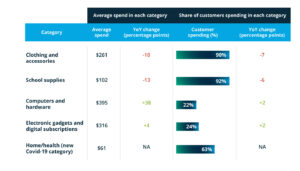
Back-to-School Advertising During a Pandemic
In a usual year, back-to-school advertising is in full swing in the mid-summer months. On average, these campaigns make up more than one-third of retail advertising efforts in July, and are largely dominated by a handful of key players, including big names like Target, Walmart, and Amazon. In fact, much of the fervour is centred around Amazon’s Prime Day, when sales rivaling Black Friday deals are made available for Prime members over a 48 hour period. This year, however, a pandemic is still in full effect and the question of opening schools for the fall semester is in the air. BTS advertising is looking vastly different from any other year.
In a BTS survey by Deloitte, it is found that parents are spending just as much in 2020 as they have in previous years. It is what they are spending more on that has changed. With schools turning to remote learning solutions, consumer spend on clothing and school supplies has decreased this year, while computers and electronic devices and digital subscriptions have risen.

There is also a new retail category for BTS in response to the COVID-19 situation – home/health – with 63% of US consumers spending in this category. The category includes home furniture for working/studying at home, and hygiene products. For instance, the Disney Store has recently launched their line of themed cloth face masks for children for the BTS season.
In line with trends experienced in other verticals this year, another major change in BTS shopping is the increase of usage of online channels, compared to in-store spend. With consumers wary of shopping in-store, online BTS shopping has increased from 29% in 2019 to 37% this year.

This season has also seen big retailers changing their sales strategies to respond to the changes caused by the pandemic. This year, Amazon pushed back their Prime Day by several months to October, in order to account for the financial impact the economic downturn has had on consumers. What this means for brands selling through Amazon is that they will miss out on the big summer-sales boost that Prime Day usually provides, as well as having little time to restock before the Black Friday sale season.
However, the BTS season can be an opportunity for smaller retail brands that have been impacted by the pandemic to make their comeback. As with any campaign this year, the key takeaway is to ensure that the message aligns with the current times to fit the needs of their customers. An example of this is JanSport, a backpack and collegial apparel brand that chose to focus their campaigns on mental health and on reconnecting with people to align their messaging with contemporary issues affecting young people during the pandemic. Daminals by yoghurt brand Danone changed their Adventurous by Nature campaign to #AtHomeAdventures to respond to the potential of children continuing to learn remotely.
This BTS season is looking different than in the years past, however, it can be an opportunity for brands to boost their sales. BTS spend is on par with previous years and advertisers can profit from the new retail categories for BTS and the significant increase in online activity. In spite of the changes this year, brands can take advantage of this retail period and boost performance by customising their campaigns to adjust marketing strategies to the new reality.